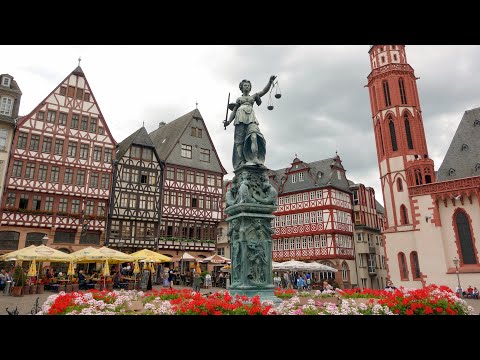
Germany, known for its rich history, stunning architecture, and robust economy, boasts numerous cities that attract tourists and business travelers alike. Among these, Frankfurt am Main and Nürnberg (Nuremberg in English) stand out as two cities that encapsulate the blend of historical significance and modern dynamism typical of the German experience.
### Frankfurt am Main: The Dynamic Financial Hub
Frankfurt, located in the heart of Germany’s Hesse region, is often referred to as the “Mainhattan” of Europe. This nickname not only plays on its location along the Main River but also reflects its skyline bristling with skyscrapers—a rare sight in European cities. As one of Europe’s leading financial centers, it hosts numerous major banks, including the European Central Bank which dictates monetary policy for the eurozone.
#### Economic Prowess
The city’s economic prowess does not stop at finance. It is also a crucial hub for transportation and trade fairs. Frankfurt Airport is one of the world’s busiest international airports, and Messe Frankfurt is one of the largest trade fair organizers globally, hosting important events like the Frankfurt Book Fair which draws visitors from all around the world.
#### Cultural Tapestry
Despite its modern skyline, Frankfurt boasts a wealth of cultural treasures. The Altstadt (Old Town) was painstakingly rebuilt after World War II and features half-timbered houses reminiscent of medieval times surrounding Römerberg Square. Museumsufer, or Museum Embankment along the River Main, is another highlight where art lovers can traverse museums covering subjects from classical art at Städel Museum to German film history.
### Nürnberg: A Rich Historical Canvas
Further south in Bavaria lies Nürnberg (Nuremberg), a city that has played many pivotal roles throughout German history. From being an Imperial Free City in medieval times to its infamous use during Nazi rallies and subsequent Nuremberg Trials post-World War II, this city offers a deep dive into both glorious and grim chapters of past epochs.
#### Historical Landmarks
The Kaiserburg Castle dominates the skyline from atop a sandstone ridge offering panoramic views over terracotta rooftops. Below lies a preserved old town with Gothic churches like St. Lorenz Church and half-timbered houses lining narrow cobblestone streets which tell tales dating back centuries.
#### Remembrance and Reconciliation
Nürnberg confronts its darker 20th-century history head-on with sites like Dokumentationszentrum Reichsparteitagsgelände (Documentation Center Nazi Party Rally Grounds), which provides critical insights into how propaganda was weaponized by Adolf Hitler. Conversely, Memorium Nürnberger Prozesse provides detailed documentation about the trials that marked significant advancements in international law after WWII.
### Cultural Festivities
Both cities are vibrant cultural hubs each year hosting various festivals that blend traditional German culture with international influences. In Frankfurt, festivals such as Luminale – biennial festival of light art – painted cityscapes with innovative light installations while Nürnberger Christkindlesmarkt – Germany’s famed Christmas market – transforms Hauptmarkt square into a festive wonderland attracting over two million visitors annually.
### Conclusion
Frankfurt am Main and Nürnberg offer unique narratives shaped by their distinctive historical paths blended seamlessly with modern progressiveness. Whether one seeks understanding through art and museums in Frankfurt or through poignant historical remembrance against medieval backdrops in Nürnberg—Germany’s rich tapestry unfolds beautifully across both cities making them essential destinations within any European travel itinerary
